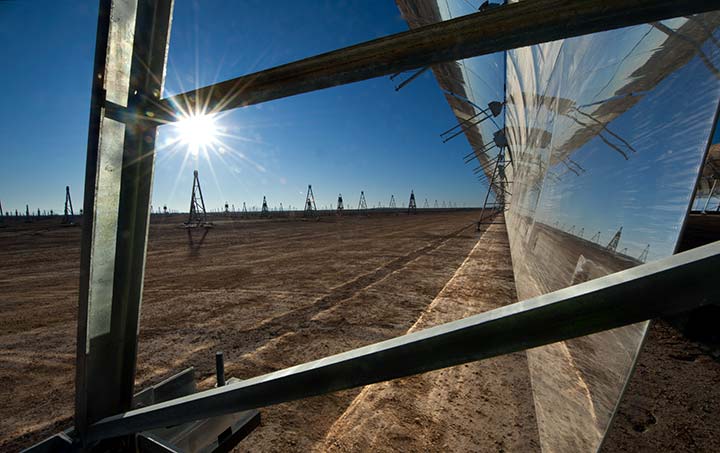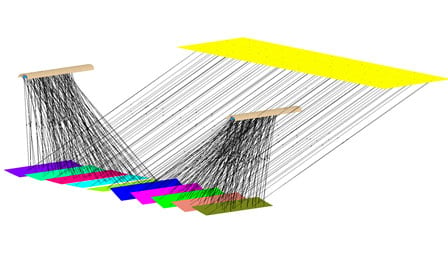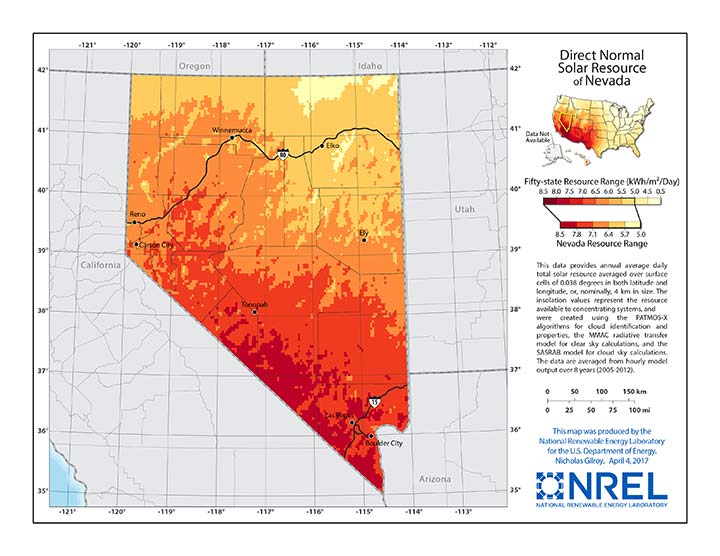Data and Tools
NLR develops and maintains data sets, maps, models, and tools to analyze and overcome technical barriers to accelerate concentrating solar power (CSP) technologies.
SolarPACES
NLR maintains the Solar Power and Chemical Energy Systems (SolarPACES) worldwide database of CSP projects across 19 member countries. SolarPACES is a program of the International Energy Agency, and the database includes CSP plants that are operational, under construction, and under development. Technologies include parabolic trough, linear Fresnel reflector, power tower, and dish/engine systems. Individual project profiles include background information, project participants, and power plant configuration data.

The Solana Generating Station in Gila Bend, Arizona, is included in the SolarPACES database. Photo by Dennis Schroeder, NLR
SolarPILOT
The Solar Power tower Integrated Layout and Optimization Tool (SolarPILOTTM) is NLR- developed open-source software that generates and characterizes the performance and layout requirements for power tower systems. SolarPILOT is used by researchers, industry technology developers, and academics to evaluate technology performance, quantify the value of research findings, and provide third-party, independent validation for privately developed tools.

SolarPILOT allows engineers to design and optimize complex solar-field configurations for power tower systems.
SolTrace
SolTrace is an NLR-developed open source software tool that models and analyzes optical performance of CSP systems. Although ideally suited for modeling complex optical systems within solar applications, the code can also be used to model and characterize many general optical systems.

SolTrace uses a Monte Carlo ray-trace method, shown here being applied to a linear Fresnel CSP configuration.
Solar Maps
NLR helps create and maintain solar maps of average daily total resource information, including direct-normal irradiance and global-horizontal irradiance maps of the 50 U.S. states. Additionally, the laboratory creates direct-normal solar radiation maps for the U.S. Southwest states that are filtered by solar resource (excluding areas below 6 kWh/m2/day), land availability (excluding national parks and other areas off limits to development), and land slope (excluding land having slopes >1% or >3%). Filters help identify the most economically suitable lands available for deploying large-scale CSP plants.
NLR also manages and updates the National Solar Radiation Database, a free and serially complete collection of meteorological and solar irradiance data sets for the United States and a growing list of international locations.

Direct normal irradiance map of Nevada.
System Advisor Model
The System Advisor Model (SAM) is a free techno-economic software modeling tool for predicting the performance and cost of grid-connected renewable energy projects at specific sites. SAM produces sub-hourly energy output and calculates detailed financial metrics based on installation and operating costs and system design parameters that the user inputs to the model.

SAM users can input a number of parameters to derive detailed project performance and cost analyses.
Share
Last Updated Dec. 6, 2025
